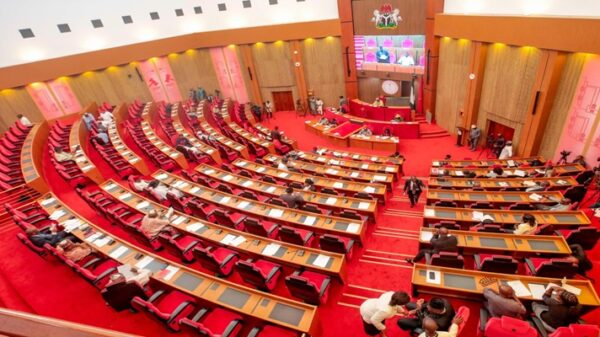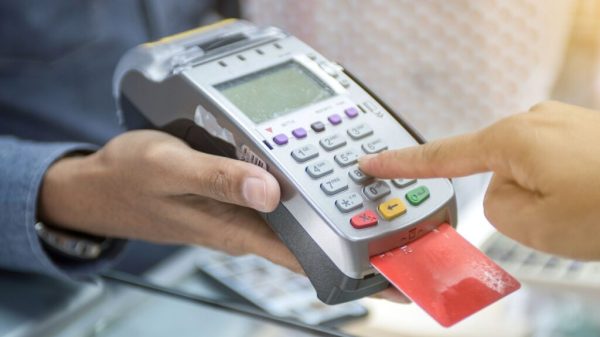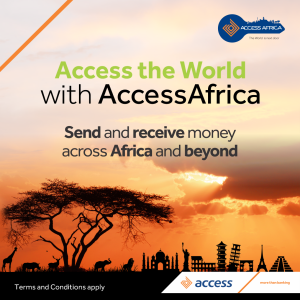Is cash still king? Perhaps, but the acceptance and use of digital channels across Africa are rapidly increasing, experiencing their highest adoption rate in history.
Currently, Africa is one of the fastest-growing consumer markets in the world. According to Economist Intelligence, the continent will be the world’s second-fastest-growing major region in 2024, just behind Asia.
In the last decade, e-commerce has experienced phenomenal growth rates worldwide, with e-commerce sales projected to grow to USD 7 trillion globally this year. Across Africa, the retail landscape is undergoing a significant shift as contactless payments and mobile money become widely integrated. Consumers in many African countries are increasingly embracing these methods for transactions.
This SeerBit whitepaper explores Sub-Saharan Africa (SSA), undoubtedly one of the smallest e-commerce regions in the world, but one with high growth potential.
The Rise of e-commerce in Africa
The COVID-19 pandemic has accelerated a major digital transformation across Africa, with the demand for digital payments experiencing a significant and sustained rise. The result? Digital payments have become an essential feature in the continent’s financial landscape.
One of the most significant developments in alternative payment methods in Africa continues to be the rise of mobile money. The phenomenal growth of mobile money can be attributed to three key factors: increased access to technology, challenges in accessing traditional financial services, and the pandemic-driven rise of contactless payments.
This is particularly true in Sub-Saharan Africa, where 144 mobile money providers are at the forefront of transforming consumer transactions. Notably, key players such as M-Pesa (by Safaricom), MoMo (by MTN) and Orange Money dominate the market share, as reported by Statista.
Notably, the region boasts 171 active mobile money service providers, indicating the expanding influence and acceptance of mobile money in the African financial landscape.
The secret to Africa’s pivot to greater e-commerce sales has also been faster growth in B2B sales, which layers online sales onto the existing network of informal retailers in the region, rather than supplanting them. B2B e-commerce platforms in Sub-Saharan Africa are thriving because they have overcome consumer trust and logistics issues by working with and tapping into the informal markets, rather than working around these sales channels. This has allowed the B2B platforms to provide goods into remote regions, well beyond urban areas.
Cross-border transactions have also played a key role in driving e-commerce. They make up more than half of all e-commerce transaction volumes in Sub-Saharan Africa. A portion of these cross-border volumes in SSA come from consumers accessing the rising domestic African e-commerce players across local borders, such as Jumia (Nigeria), Kilimall (Kenya), and Takealot (South Africa). Domestic e-commerce provision in Sub-Saharan Africa is only just beginning. Nevertheless, it presents an opportunity for Sub-Saharan Africa to develop its own big hitters in the market and enhance the continent’s connection to the rest of the world.
Challenges to e-commerce Growth in Africa
Uneven connection across the region
Sub-Saharan Africa is home to more than a billion people, a large proportion of whom live in low-income and lower-middle-income countries. This huge population is not uniformly connected to the internet and there is some evidence that not all users are utilising their connectivity to its full capacity.
High inflation subduing consumer spending
Rising inflation means that individuals have less discretionary income and tend to spend less money on splurges or “luxury” products. Price becomes the leading factor in decision-making for many consumers. Across Africa, this may also mean looking to brick-and-mortar retailers and informal markets which mainly trade in cash to secure goods at lower prices.
Functionality limits user adoption
According to The State of Instant and Inclusive Payment Systems In Africa – SIIPS 2022 report, functionality pain points erode trust.
The lack of inclusivity translates into sub-optimal usage. Consumer research in Kenya, Nigeria, Ghana, Tanzania, Zambia, the DRC and Egypt suggests that many end-users use digital payments only for limited use cases, such as sending and receiving money between friends and family. Consumer payments to merchants remain under-digitized: only 44 percent of individual respondents make P2B payments digitally.
The Role of Payment Platforms
Across Sub-Saharan Africa, a digital payment revolution is quietly unfolding. Fueled by the surge in mobile phones, the drive for financial inclusion, and the push for digital transformation, alternative payment methods are rapidly gaining much welcomed traction. Traditional banking infrastructure often struggles to reach the vast unbanked and underbanked populations, but these innovative solutions bridge the gap, offering financial services to a dramatically wider segment.
For example, according to the Global Findex Database (World Bank), in the region only three percent of the population has access to a credit card, while mobile phones have proliferated quickly, with a 75 percent penetration rate, making alternative payment methods a perfect match for the specific needs of Sub-Saharan Africa.
As Aida Diarra, senior vice-president and head of Visa in Sub-Saharan Africa puts it, “The fact that there are 261 million people today that do not have access to financial services – and combine the fact that there are less than two million businesses that accept digital payments – it creates an environment where innovation has to play a role to drive financial inclusion and commerce across the continent.”
Sub-Saharan Africa is now considered the global epicentre of mobile money, due to its 48 percent of global share of registered accounts. In 2022, this region had 763 million mobile money accounts, out of the 1.6 billion accounts worldwide. Furthermore, this trend has spiked with the high registration of new accounts in 2022, as the area was responsible for 59 percent of all new accounts registered globally.
Mobile money services have gained widespread adoption across the continent, with countries like Kenya and Ghana leading the way. In Kenya, for instance, mobile money platforms have revolutionised the way people transact, with transactions made via mobile wallets equivalent to a significant percentage of the country’s GDP. This success can be attributed to high mobile phone penetration, limited traditional banking infrastructure, and the affordability and convenience of mobile money services.
As the e-commerce sector becomes increasingly competitive, retail businesses need to adjust their approaches to include providing more value propositions for their main audience, localised e-commerce solutions and engaging more with a younger generation of consumers.
Conclusion
Sub-Saharan Africa’s payment landscape is undergoing a dynamic transformation, driven by innovation, alternative solutions and vibrant new market players. However, a critical gap remains. The infrastructure, regulations, and overall payment ecosystem haven’t fully matured to support the optimal development of payment services and remittance flows across the region.
Despite this, e-commerce in Africa is well underway. Estimates suggest about 264 e-commerce start-ups are operational across the continent, active in at least 23 countries. This indicates a significant potential to create new jobs – as many as three million by 2025. These jobs will be directly in online marketplaces, supporting services and spin-off economic activity.
To read more exciting perspectives, http://download the whitepaper here
![]()



























































